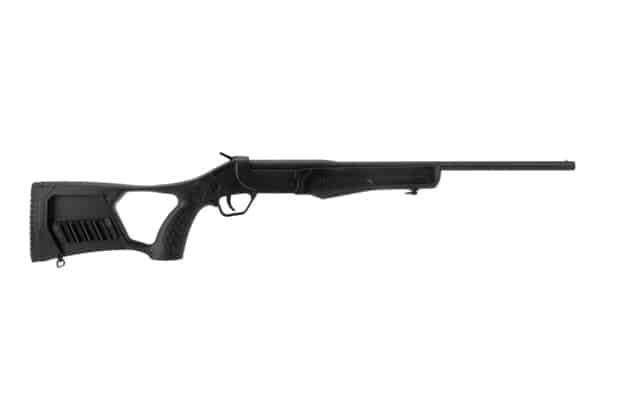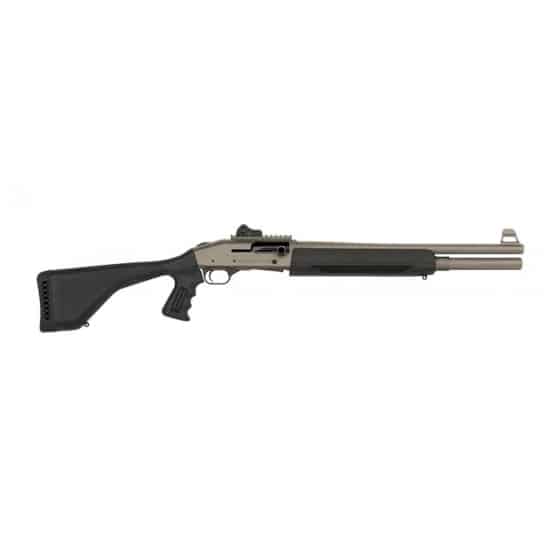At a Glance: Best Tactical Shotgun
- OUR TOP PICK: Benelli USA M2 12 Gauge
- Henry Repeating Arms Lever Shotgun 410 24″ Cylinder
- BEST BUDGET OPTION: Benelli USA. M1014 12 Gauge Shotgun
Comparison of The Best Tactical Shotgun
| PRODUCT | DETAILS | ||
|---|---|---|---|

Our Top Pick
|
Benelli USA M2 12 Gauge |
|
View Latest Price |
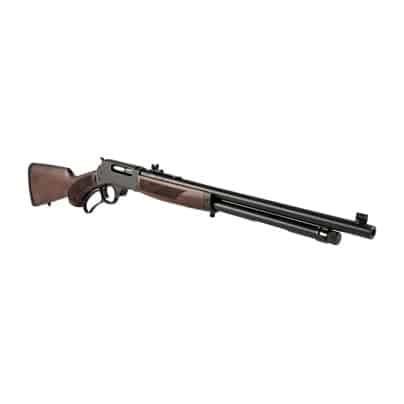
Our Top Pick
|
Henry Repeating Arms Lever Shotgun 410 24″ Cylinder |
|
View Latest Price |

Our Top Pick
|
Benelli USA. M1014 12 Gauge Shotgun |
|
View Latest Price |
When choosing a gun to protect your home, you want the very best. A tactical shotgun is for sure one of the deadliest weapons out there. It is cheaper, more reliable, and much more useful for shooting at close range than many other firearms. This is why most gun experts would recommend a tactical shotgun for protecting yourself, your family, and your home. This article will further discuss what makes the best tactical shotguns useful for home defense situations and the types of tactical shotguns available. We will also cover ammunition options, red dot optics, exploring which load is the best choice for home defense usage.
Our Pick of the Top 6 Best Tactical Shotguns
Because we want you to have the very best protection possible, we have picked the best shotguns on the market and tested them out ourselves. This has allowed us to provide a thorough review of each one and compare them to each other so that you can make a confident and informed choice.
Benelli USA M2 12 Gauge
The Benelli semi-automatic M2 serves as one of the most rugged and reliable tactical shotguns in all conditions, including the most adverse circumstances. The M2 12-gauge shotgun is lightweight, durable, and fast to operate. It’s also a versatile firearm and can cycle everything from target loads to heavy 3-inch magnums.
The Benelli M2 is available in two barrel lengths; 26″ (with an overall length of 47.5″) and 28″ (with an overall length of 49.5″). It fits 3+1 round magazines and features a stylish mossy oak shadow grass finish. Weighing just over 7lbs, the M2 is lighter than other tactical shotguns too.
Like all Benelli shotguns, we found the M2 to be incredibly well crafted with impressive fine-tuning. The ergonomics, along with the fit & feel when handling the firearm, is top-notch. Another highlight of the M2 is the Inertia Driven operating system. This design gives the shotgun a fast, smooth, and clean operation.
It’s not hard to see that the Benelli M2 is one of the best home defense shotguns on the market. Its durable design and ergonomic design means it will last a lifetime too. If properly maintained, this is a self-protection firearm that can even be passed down to future generations.
Pros
- Rates high in endurance and reliability
- Highly ergonomic design
- Uses the Benelli Inertia Driven operating system for smooth
- Lightweight
- Available in two barrel lengths
- Can cycle most loads
Cons
- None
Henry Repeating Arms Lever Shotgun 410 24″ Cylinder
The Henry H018-410R lever-action shotgun is a top choice for lever-action fans looking for a compact shotgun with a fast and familiar operating system. With a 24″ barrel and a shorter overall length of 40.5 inches, this tactical shotgun gives versatile use for hunting, shooting at the range, and of course, home defense.
The shotgun features a standard cylinder-bore choke and fully adjustable rear sights, and a bladed front sight. You will find other features on the Henry 410, such as pistol grip wrists, checkering fore and aft, and sling swivel studs. What’s more, there is also a thick non-slip ventilated black rubber recoil pad at the rear.
We love vintage-style wood panels on this shotgun, which give a stylish but traditional look. If you are used to lever-action shotguns, you will love the rapid operation this one provides. The compact size is another plus for us, as it makes it much easier to maneuver around small inside spaces. Therefore, despite being made for hunting, the Henry 410 equally serves as one of the best shotguns for home defense.
Pros
- An excellent home defense weapon for lever-action fan
- The shorter barrel and overall length makes it easier to use indoors
- Many great features including pistol grip wrists and a non-slip ventilated black rubber recoil pad
- Aesthetically pleasing vintage wood-panel style
Cons
- Designed for hunting
- If you’re not familiar with lever action, it may take a while to experience easy and fast operation
Benelli USA. M1014 12 Gauge Shotgun
The M1014 12 gauge shotgun consists of a black polymer military platform housing Benelli’s Inertia-Driven recoil system. This combination results in the most reliable and battle-ready home-defense system and one of the fastest semi-automatic shotguns to ever be produced.
Smaller than the M2, the Benelli M1014 has an 18.5″ barrel, giving an overall length of 40″. This provides more ease of use for indoor operation. The shotgun weighs 8 pounds and has a 5 round magazine capacity.
The M1014 is fitted with ghost-ring sights to give you an impressively fast target acquisition. It is equipped with a fixed-position, skeletonized buttstock, along with a pistol grip and a cheekpiece. What’s more, all exterior surfaces have been given a treated finish to prevent reflection and corrosion.
There’s so much we love about this model. The ARGO system gives very low felt recoil, and the rubber butt pad provides a comfortable hold. But it’s the gun’s speed and endurance that make the M1014 one of the best tactical shotguns out there. If you’re an experienced shooter, you might find you can shoot this shotgun almost as fast as a fully automatic.
Pros
- The fastest and most reliable shotgun
- Inertia-Driven recoil system housed in a military-style platform
- Short length for easy indoor use
- High-quality pistol grip and butt pad for comfort
- Features ghost-ring sights for fast target acquisition
Cons
- None
Rossi Tuffy Break Open .410 Shotgun 18.5″
The Rossi Tuffy break open is an affordable single-shot shotgun. It is perfect for less experienced shooters or first-time gun owners who want a dependable weapon to protect their families and homes. Moreover, the short 18.5-inch barrel combined with its .410 Bore and thumbhole grip makes it easy to manage for all sized bodies, notably smaller frames.
This Rossi Tuffy shotgun rates high in safety due to its multiple safety functions. These features include a transfer bar, manual safety, and the Taurus Security System. What’s more, the single-shot rifle limits the capacity, making it much safer for beginners. Another highlight of this shotgun is the bead front sight, giving reliable target acquisition.
We love the lightweight and compact design of this firearm. It weighs just 4.5 pounds but is super sturdy nonetheless. It can be loaded with a wide variety of ammo, including many inexpensive shells. It is very accurate when used for close ranges, out to 30 yards.
Although it may be the best tactical shotgun for new-starters, the slower operation and lower power will likely not satisfy you if you’re an experienced shooter.
Pros
- A superb choice for novices
- Lightweight and compact so very easy to manage
- A brilliant option for those with smaller frames
- Accepts many different ammunitions
- High accuracy in close ranges
- Many safety features, including the Taurus Security System
Cons
- The single-shot operation can feel limiting to experienced shooters
- Not the fastest or most potent shotgun
Mossberg 590 Shockwave 20 gauge Shotgun
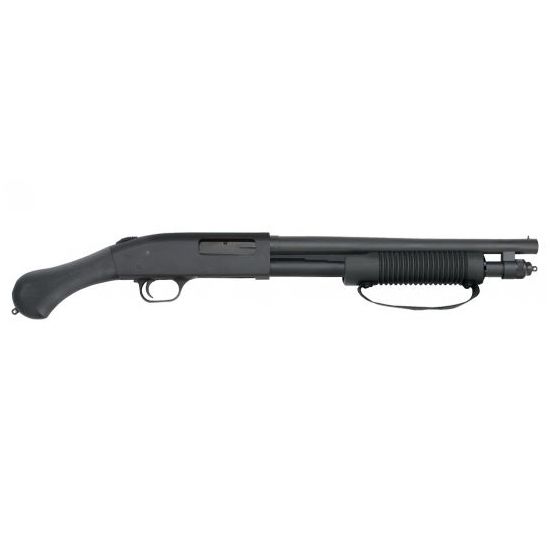
Mossberg’s 590 Shockwave pump action shotgun utilizes their signature Shockwave Raptor bird’s head style pistol grip. This gives you a firmer grip and reduces felt recoil. There is a 14″ heavy-walled barrel, 6 round magazine capacity, and an overall length of 26.37″.
The 20 gauge shotgun also features an ambidextrous safety, clean-out tube magazine cap, and front bead sight. Moreover, there is a strapped forend to keep your hand clear of the muzzle while you fire. It’s lightweight at 5.3 lbs, but the build is surprisingly tough and durable.
This is a pleasant, manageable gun that produces little recoil, so it is a brilliant option for less experienced shooters. Using a red dot sight on the weapon would improve the accuracy further, and it is very affordable to run too.
Because of its ease of use, it could easily be the best home defense shotgun for families where there could be multiple shooters. Aside from the manageability, the Mossberg 590 is incredibly fun to shoot, making an excellent gun for practicing with at the range.
Pros
- Produces minimal recoil
- Accurate and reliable shotgun from a trusted American brand
- Easy to manage, so it is an excellent option for beginners
- Durable yet lightweight construction
- Ambidextrous use
Cons
- None
Mossberg 930 SPX 12 gauge Shotgun With Pistol Grip
The Mossberg 930 SPX 12 gauge is a formidable, reliable semi-automatic shotgun that serves well for both hunting and defense purposes. This model features a full-length pistol grip, has an 18.5″ barrel, and a 38″ overall length.
It shoots ultra-fast and accurately while keeping recoil low. Its construction is super strong and can take a beating but is not too heavy either. The 930 SPX has a 7+1 magazine capacity and an incredible ghost ring rear sight and fiber optic front sight.
Unlike some other semi-automatics, the gas system of the 930 SPX cycles very reliably. It handles low-powered ammo like low-brass birdshot surprisingly well. The 930 SPX has a top-mounted tang safety and a side-mounted charging handle, which is easy to operate and manipulate.
If you’re after a semi-automatic shotgun for your home protection needs, you may find the Mossberg 930 SPX to be the best tactical shotgun for you.
Pros
- Cycles very reliably compared to other semi-automatics
- Fast, accurate, and produces little recoil
- Tough, indestructible build
- Features a ghost ring rear and front sight
- The full-length pistol grip gives a firm but comfy hold
Cons
- The safety can be annoying to switch on and off with the pistol grip
Why Choose a Shotgun for Home Defense?
A shotgun is the best choice for home defense for various reasons. One key difference between shotguns and handguns/A.R.s is they give higher accuracy. They cast a broader shot pattern, and many are relatively easy to use, requiring minimal shooting skills. This means even inexperienced shooters can likely take down an intruder with a shotgun. While a handgun or AR-15 can be used to defend your home, a shotgun gives the most effective firepower and accuracy.
What is a Tactical Shotgun?
A tactical shotgun is a shotgun that is intended for defensive use. Simply put, a tactical shotgun is made to end the threat and is very different from a hunting shotgun. There are a few key differences between a tactical shotgun and a hunting one.
To have the best tactical shotgun you need a few things.
- A good reliable gun, Mossberg, Benelli, Beretta, Etc
- An 18 to 20-inch barrel
- A good set of sights
- Sling mounts and a good sling
That’s really it. Anything else is a bonus. I prefer to keep my tactical shotgun lightweight and pointable. The only addition I add is a side saddle to carry some extra ammunition. A shotgun is a simple weapon, you don’t need a rail system, an optic, or anything outside of the basics. Those extras can be nice, but aren’t necessary.
Barrel Length
What size barrel do you want for a tactical shotgun? For a tactical shotgun, you will want a shorter barrel. This is because of the difficulty maneuvering around in small rooms with a long gun. Hunting shotguns have longer barrels, typically between 24″ to 30″.
US federal law states that the minimum barrel length for a shotgun must be 18″ and the max overall length 26″. You ideally want to find a tactical shotgun that is as close to these minimums as possible. This will make it easier to move around small indoor spaces.
Action Type
Most hunting shotguns will utilize a lever-action or bolt-action; however, this operation type can be too slow for home defense. A pump-action or a semi-automatic shotgun is a better choice.
- Pump-action is the most reliable operation, and thus, the most preferred for self-defense.
- A pump-action shotgun requires you to manually cycle the action. You slide the pump back and forth to eject a spent round and load a fresh shell into the chamber.
- While easy to use, manual cycling does create more potential for human error if used by inexperienced shooters. However, once you know the system, it’s quick and straightforward to operate.
- The semi-auto setup is slightly faster to use, but more maintenance is needed.
- With a semi-auto shotgun, the spent shell is automatically ejected, and the new shell is loaded into the chamber when you pull the trigger to fire.
Stock Size
A smaller stock means a shorter overall length, which is why many home defense gun owners opt for a small stock on their shotgun. However, the smaller the stock, the harder it will be to manage recoil.
The most important consideration with the stock size is that it fits every household member that is authorized to and may need to use the gun. It’s best to size the weapon to the smallest user in your household. Alternatively, you can opt for an adjustable stock.
Magazine Capacity
Shotgun shells are larger than those used in ARs and pistols; therefore, a shotgun’s magazine capacity won’t be very high. You should look for a shotgun with a reasonably high capacity that doesn’t add too much weight or affect the performance. A shotgun with a capacity of 6+1 or higher is generally your best bet.
Types of Tactical Shotgun
Tactical shotguns can be broken down further into the following four types.
- Combat shotgun – This is the preferred tactical shotgun used in the military. This is because it has the most power and can be the deadliest. Combat shotguns guarantee to cause a lot of damage.t
- Riot shotgun – As the name suggests, riot shotguns are commonly used by police forces when needed to break up protestors, rioters, and revolutionaries. These shotguns have a shorter barrel and effortless overall use.
- Sawed-off shotgun – This type of shotgun has a shortened barrel to make it more accessible to maneuver around and easier to use at a short-range. This style makes the most concealable shotguns too.
- Coach gun – A coach gun is similar to a sawed-off style, but it has an 18-inch barrel. They are commonly used for hunting in a bush, scrub, or marshland.
Ammo Versatility: Birdshot, Buckshot, and Slugs
There are three main types of shotgun ammo that you can use: Birdshot, Buckshot, and Slugs. Each ammo has its pros and cons. Let’s explore the three types further.
Birdshot
- Birdshot contains hundreds of tiny pellets. Upon firing, they rapidly spread into a wide cone once they leave the muzzle.
- Birdshot is not recommended if you’re using your shotgun for home defense. This is down to the pellets being so small and light, which means they lack the power needed to cause deep penetration.
- As the name suggests, birdshot is intended for hunting birds or other small vermin. Unless you’re incredibly close to your target, it’s unlikely birdshot will cause enough damage to an intruder to neutralize the threat.
- It will likely leave a devastating wound, but it won’t penetrate deep enough to hit vital organs, making it unsuitable for personal defense purposes.
- Some people choose birdshot for home defense as it’s the least likely load to over-penetrate through walls. Therefore, for those living in apartments, birdshot loads can serve one purpose for personal defense.
Buckshot
- Buckshot is undoubtedly the most favored shotgun ammunition for home defense among shotgun owners.
- It is a devastating round, particularly at a close range but will be effective out to 30-50 yards.
- It can deliver 16 pellets to your attacker at over 1000 feet per second, which is like nine 9mm bullets striking your target at once. This means it can penetrate deep enough to hit vital organs and eliminate the threat in your home.
- The only negative to this ammo is it is more likely to penetrate through walls than birdshot.
Slugs
- Slug ammo is very different from the previous two, as it consists of one large solid projectile.
- What’s excellent about slug is its long effective range. It’s proven to be effective to 75-100 yards, with some being able to effectively penetrate out to 200 yards.
- The ability to penetrate so profoundly means it is not the best choice for closer ranges, such as inside your home. While it may work well in a large yard, if used inside your house, it’s likely to over-penetrate and cause damage to your walls and furniture. Worse yet, it could injure pets or family members.
With that being said, Buckshot is usually the best ammo to use in your shotgun for home defense purposes.
The Downfall To Using A Shotgun For Home Defense
Despite its advantages, some people have a few concerns about using a shotgun for home defense.
- Excessive recoil – Some less-experienced shooters may have difficulty dealing with the heavy recoil on some shotguns. There are various ways to deal with this, but even so, it will always kick more than a carbine.
- Low ammunition capacity – Lower ammunition capacity means more manipulation is required. Carbines have a higher capacity, holding up to 30 round magazines, requiring much less manipulation than shotguns.
Again we can only extend the capability of the shotgun so much. If you begin adding larger and larger magazines and longer tubes the weapon will get heavier. The weapon will start to become more and more unwieldy. I keep my tube at 7 rounds plus 1 in the chamber.
How to be a Successful Shotgunner
The key to being a successful shotgunner is being good at reloading, and topping off. You need to learn how to load fast, and efficiently.
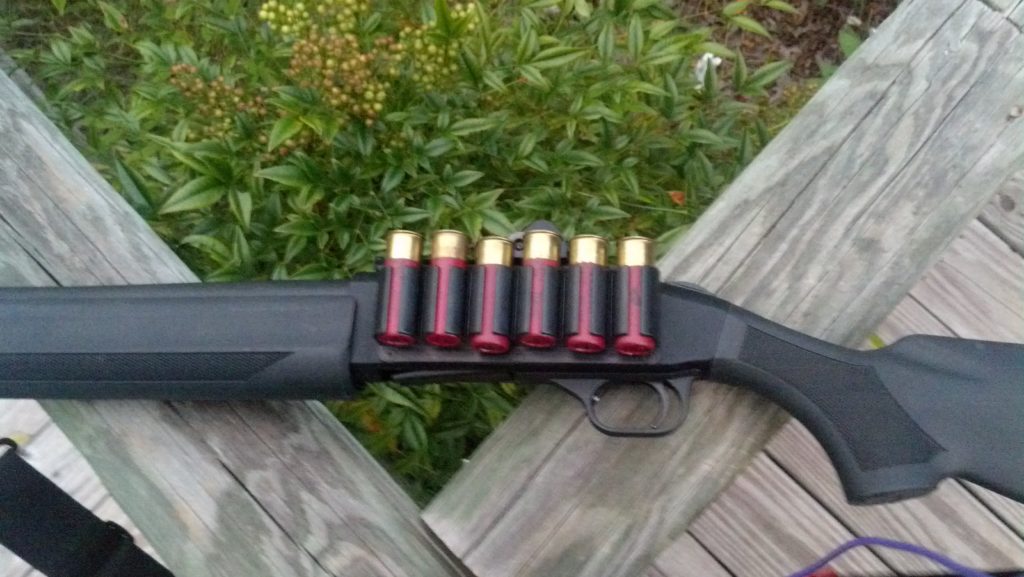 Topping off is the art of keeping the shotgun ready to go at all times. There are different methodologies to this, but the general the shoot two, load two is the most widely accepted method. It is pretty self-explanatory. Mastering the reload from a weapon’s side ammo carrier, or from a belt, pouch, or whichever you choose to reload is critical.
Topping off is the art of keeping the shotgun ready to go at all times. There are different methodologies to this, but the general the shoot two, load two is the most widely accepted method. It is pretty self-explanatory. Mastering the reload from a weapon’s side ammo carrier, or from a belt, pouch, or whichever you choose to reload is critical.
My method is to reload from my belt or plate carrier first. My use of the side saddle is for when I need to reload as fast as possible. Practicing the shoot two, load two method also teaches you ammo management. Obviously, there are times when you can easily run dry. That is also why it’s important to be able to reload from dry rapidly. The first step is getting a round in the chamber and getting the weapon pointing back on target. Then feeding the tube while keeping the weapon on target. This is your tactical reload. If there’s a lull in the fighting you can reload the weapon by twisting it sideways and resting it in the crook of your firing arm. This is an admin, or ready reload.
Final Thoughts – Which Is The Best Tactical Shotgun For Home Defense?
From testing and reviewing the guns on this list, two stood out to us the most. If you’re an experienced shooter, we feel the Benelli USA. M1014 12 gauge shotgun is the best tactical shotgun for you. This is down to the Inertia-Driven recoil system and durable, military-style platform, making it the fastest and most reliable shotgun we’ve used. Moreover, it has some great features, gives loss recoil, and its short length makes it easy to use indoors.
Next, we found the Mossberg 590 Shockwave 20 gauge shotgun to be the best tactical shotgun for novices. This is because it produces minimal recoil, making it easy to use for even the most inexperienced shooters. Moreover, it’s highly accurate, lightweight, and fun to shoot!
Whichever tactical shotgun you go for, rest assured that all six shotguns are high-quality, top-performing weapons for personal defense situations. We hope this guide has deepened your knowledge of tactical shotguns by showing you why they are the best choice for your home protection needs.


